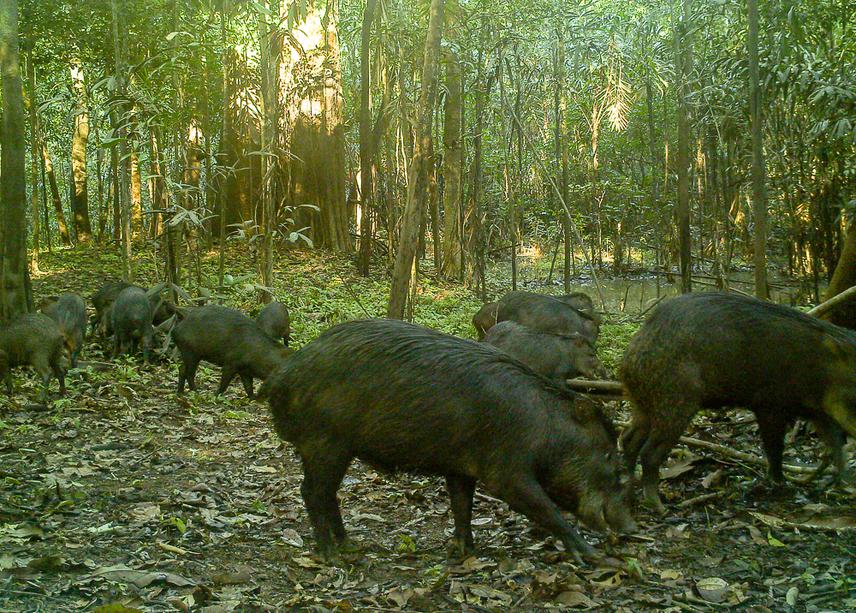Hugo Cardoso de Moura Costa
Other projects
18 Jan 2013
Ecology and Conservation of the Jaguar Panthera onca at the Cristalino State Park in Southern Amazon
This project aims study the spatial dynamics of WLPs herds using GPS tracking, assess population status through occupancy models and monitor species harvest. These data will support the creation of a community-based hunting statute within and outside Amazonian Extractive reserves to reduce the impacts of overhunting on the ecosystem services provided by large mammals.

Overhunting is the major cause of Anthropocene defaunation leading to the extirpation of vertebrate assemblages resulting in an “empty forest” syndrome in ecosystem services. In Amazonia, large-bodied, wide-ranging species such as white-lipped peccary (WLP), play a critical role in diffusing nutrients between highly productive floodplains and unflooded forests. Subsistence overhunting and habitat loss are the main threats to WLPs, which have been extirpated from 21% of their historical range. WLP is arguably the most important game species throughout its range, being among the most harvested Amazonian terrestrial species in terms of biomass. Yet they have never been studied in lowland Amazonian forests and continue to be decimated by unsustainable hunting practiced by thousands of local indigenous and non-tribal semi-subsistence communities. Thus, they are an excellent model to understand the effects of overhunting at a broad scale, due their high ecology importance and sensitivity to hunting pressure. Extractive Reserves represent over three quarters of all protected area acreage in the Brazilian Amazon but their conservation performance requires further investigation once they are primarily designed to secure traditional livelihoods rather than biodiversity conservation.
This is the first study exclusively focused on WLP in the entire central, western and eastern Brazilian Amazon. This work will contribute to critical reserve design issues in that Amazonian reserves continue to be created to protect wilderness areas, with little or no information on the size of mammal populations that they can effectively protect for any given reserve size and forest habitat mosaic. This information is essential for the implementation and biodiversity monitoring of Extractive Reserves where subsistence hunting is legal. Furthermore, herd size and cohesion in WLP populations range widely throughout the Neotropics from fewer than 30 to over 1200 animals, but whether or not Amazonian reserves can meet the spatial requirements of WLPs remains poorly understood.